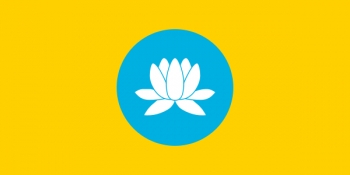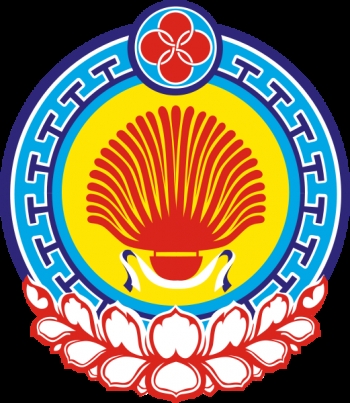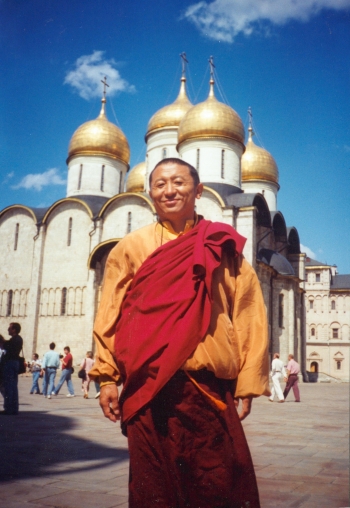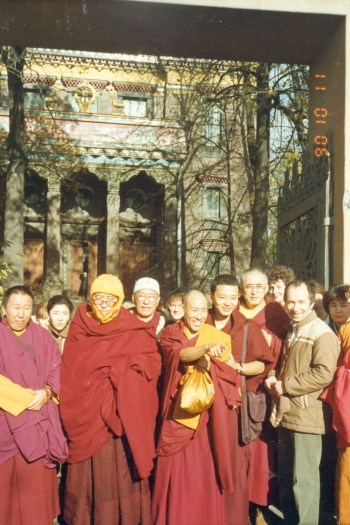The poignant story of Russia’s Buddhist nomad traditions, its spiritual republics, is ongoing. It is a living tale that is far from extinguished. Despite the imperialism of the Russian Empire and cultural persecution by the Soviet Union, Russia’s Buddhist communities have endured and kept their unique place within its borders, and this is can be seen most obviously in the Republic of Kalmykia, which has been registered as an autonomous republic within the U.S.S.R. and its successor, the Russian Federation, since 1958.
Buddhistdoor would like to thank Dr. Terentyev for his contribution, and hope that this series can help to further awareness of Russia’s unique Buddhist inheritance.
With the start of perestroika, which heralded the reforms that ended the Soviet Union, Buddhism's renaissance and growth throughout the country began in earnest. In 1988 and 1989, the first Buddhist communities were registered in Tuva, Kalmykia, and Leningrad. In 1991 for the first time the 14th Dalai Lama openly visited Moscow and Buddhist regions of the country, giving a powerful impulse to the Buddhist renaissance. His earlier visits of 1979 and 1981 were not advertised by press.
With the start of perestroika, which heralded the reforms that ended the Soviet Union, Buddhism's renaissance and growth throughout the country began in earnest. In 1988 and 1989, the first Buddhist communities were registered in Tuva, Kalmykia, and Leningrad. In 1991 for the first time the 14th Dalai Lama openly visited Moscow and Buddhist regions of the country, giving a powerful impulse to the Buddhist renaissance. His earlier visits of 1979 and 1981 were not advertised by press.
Today more than 200 Buddhist communities are active in Russian territory. Besides the Tibetan Buddhism native to the Kalmyks, Buryats, and Tuvans, other branches of the Dharma are now flourishing as well: Theravada, Korean Son Buddhism, and the Japanese tradition of the Lotus Sutra.
The Tibetan tradition itself is not limited, as it was in the pre-war period, to a monopoly of the Gelug school. By the end of the twentieth century in Russia all the other Tibetan schools had appeared: Nyingma, Kag'iu, Sakya, and Dzogchen as taught by Namkhai Norbu Rinpoche (b.1938), which unites Buddhist and Bon versions of this doctrine. The majority of Buddhist communities are united by a centralized organization: the old TsDUB, which was renamed The Buddhist Traditional Sangha of Russia in 1996. Besides the Buryat communities, several organizations from the European part of the Russian Federation joined this organization. Since 1991 the Union of Buddhists of Kalmykia has been active there, led by Telo Rinpoche – i.e., a lama reincarnated from the great Indian yogi Tilopa (who is currently the only Rinpoche native of the Russian Federation).
In all three Buddhist republics the renaissance of Buddhism is seen as a sign of the strength of indigenous national non-Russified culture and accordingly is supported by the state. According to the 1997 Russian Federation law on religion, On Freedom of Conscience and Religious Associations, Buddhism is counted as one of the four 'traditional religions of the Russian Federation' other than Orthodox Christianity (Judaism and Islam are the other two).
Before 1990 the Buddhists of Russia generally had no opportunities to publish their own literature. Since 1991 the first Buddhist books began to be published, as well as a number of Buddhist journals, including Buddhism (just two issues have appeared), Narthang Bulletin (renamed Buddhism of Russia in 1995), Garuda, Mir Kag'iu (now Buddhism.ru) and others. By 2003 approximately fifty Buddhist internet sites were functioning; nowadays there are many more.
The problem of Buddhist education, however, has yet to be resolved. Although in Buryatia and Kalmykia institutions of higher Buddhist education have been established, they do not have enough financial resources or teaching staff.


















